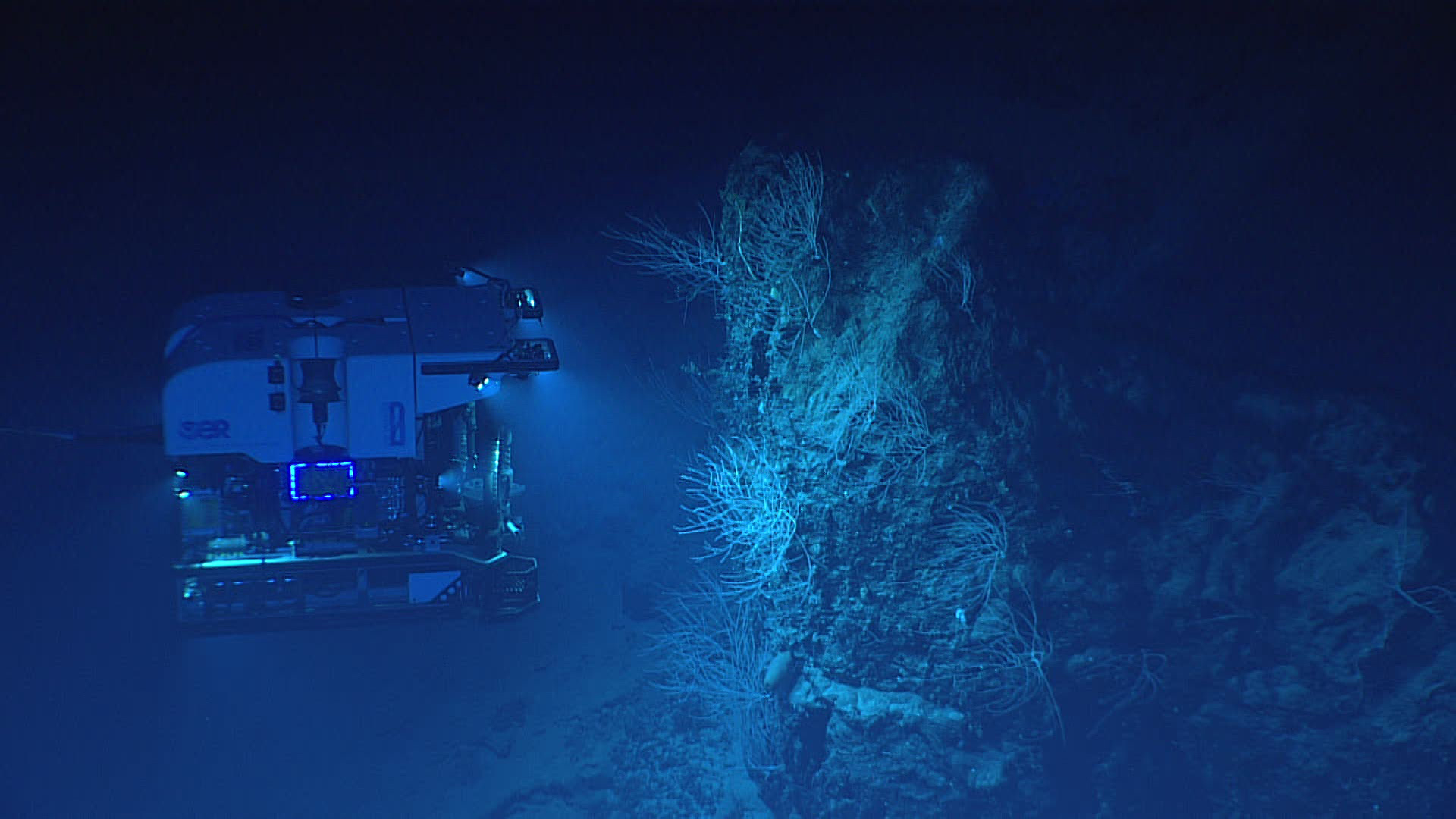New Champion of the Charlie Gibbs Fracture Zone Hope Spot Urges Comprehensive Protection of the High Seas
June 23, 2022
Featured image: Deepsea lizard fish (Bathysaurus ferox) found in the Charlie Gibbs Fracture Zone (c) David Shale
HIGH SEAS, MID-ATLANTIC RIDGE
Charlie-Gibbs Fracture Zone (CGFZ) is part of the high seas and the deep sea often referred to as a “living library”, brimming with understudied and unobserved creatures. The fracture zone is of great scientific interest and a unique geological feature. In 2018, it was identified as the area in the deep North Atlantic with the highest potential for climate change resilience (Johnson et al., 2018). While only being discovered in 1966, the fracture zone has since been recognized as part of the OSPAR Convention’s High Seas MPA (marine protected area) network, comprising two MPAs that together protect elements of the seafloor and the water column. However, David Johnson has hopes for not only continued protection of the area but that proactive proposals (Weaver and Johnson, 2012) can influence conservation planning throughout the high seas.

International marine conservation nonprofit Mission Blue recognizes Professor David Johnson as the new Champion of the Charlie-Gibbs Fracture Zone Hope Spot. In 2010 as Executive Secretary to the OSPAR Commission, he worked to persuade ministers to declare the area as one of the world’s first High Seas marine protected areas. Since then, he has coordinated the Global Ocean Biodiversity Initiative, working with the Convention on Biological Diversity (CBD) to highlight places in the ocean that need additional efforts to conserve their integrity.

Dr. Sylvia Earle, Founder of Mission Blue says, “I am delighted to welcome David Johnson and Vikki Gunn as the new Champions for the Charlie-Gibbs Fracture Zone Hope Spot! We must put protections into place that safeguard the deep sea and the high seas in order to secure an enduring future for humankind.”
Charlie-Gibbs Fracture Zone was among the first established Hope Spots and encompasses the fracture zone, meandering Sub-polar Frontal Zone, and diverse communities of the Mid-Atlantic Ridge including individual seamounts, and is 2,000km long and in some places, more than 4,000m deep.
Despite a series of successful research expeditions, the fauna in this remote area remains understudied. In 2010 as part of the Census of Marine Life, the Mid-Atlantic Ridge Ecosystem (MAR-ECO) Project and ECO-MAR cruises resulted in the observation of mid-water organisms, benthic suspension feeders, and soft sediment benthos. There is evidence of both deep-sea sponge aggregations (demosponges and glass sponges) and cold-water corals in this area. Research cruises have recorded rare and vulnerable benthopelagic species such as deep-water squalid sharks (e.g. leafscale gulper shark Centrophorus squamosus and Portuguese dogfish Centroscymnus coelolepis), and deep-water fish such as orange roughy and a rich variety of cephalopods. Blue whales, sei whales, leatherback turtles and seabird species like the great shearwater are also found in the Hope Spot.

In June/July 2022, Johnson is collaborating remotely with the Voyage to the Ridge 2022, a dedicated scientific mission conducted by NOAA and their partners. This mission is conducting a series of three telepresence-enabled expeditions on the Okeanos Explorer that will include mapping operations and remotely operated vehicle (ROV) dives to collect baseline information about unexplored and poorly understood deepwater areas of the Charlie-Gibbs Fracture Zone, Mid-Atlantic Ridge, and Azores Plateau. “This is a brilliant opportunity to build on what we already know and it’s a chance to investigate steep slopes and identify rare benthopelagic and mesopelagic species”, says Johnson. “ROV dives are planned at different depths – sharing live video from the abyss up the walls of the fracture zone, exploring potential hydrothermal vent and extinct polymetallic sulfide systems, all contributing to NOAA’s Atlantic Seafloor Partnership for Integrated Research and Exploration (ASPIRE)”.

Johnson’s goals for the Hope Spot include continued research in the area with a focus on marine life that migrates through the “deep sea drive-in” – such as whales, turtles, and sharks. These swimways are safe havens for marine life to feed, rest, and mate as demonstrated by the MiCO consortium, a GOBI-supported project led by the Marine Geospatial Ecology Lab of Duke University. Johnson has a particular interest in understanding and reducing shark bycatch in the Fracture Zone.

The deep sea has been observed to act as a buffer zone against some of the negative effects of climate change, but these waters aren’t indestructible. “What is protected now must be protected in the future as well,” he explains. “We need to continue to address oncoming threats and urge policy-makers to take action on them”, he says. “The Fracture Zone is a refuge for long-lived species and could serve as a sanctuary against the negative impacts of climate change. It is currently formally protected, and I am keen to help keep it that way.” Johnson hopes that Charlie-Gibbs Fracture Zone can earn recognition as a CBD EBSA, an Ecologically or Biologically Significant Marine Area, another step towards presenting a robust case study for the current BBNJ negotiations and establishing a marine governance model.

Johnson believes that the Charlie-Gibbs Fracture Zone can serve as an exemplar for future ocean governance – recognizing scientific importance, securing formal protection and monitoring conservation effectiveness. He elaborates, “The world is finally waking up to the urgent need to safeguard even the deepest and most remote places in the ocean.”
He concludes, “The high seas are the final frontier, and more work is needed to gain universal recognition. Change happens slowly, and marine life recovers slowly. These creatures need a multi-generational commitment to protection and recovery.”
About David Johnson, Director of Seascape Consultants Ltd
Johnson was previously the Executive Secretary to the OSPAR Commission (2006-2012), establishing the world’s first network of Marine Protected Areas in Area Beyond National Jurisdiction. Seascape Consultants managed the EU FP7 MIDAS project (2013-2016), evaluating the environmental impacts of deep-sea resource exploitation. He holds an Honorary Professorship with the University of Edinburgh UK.









